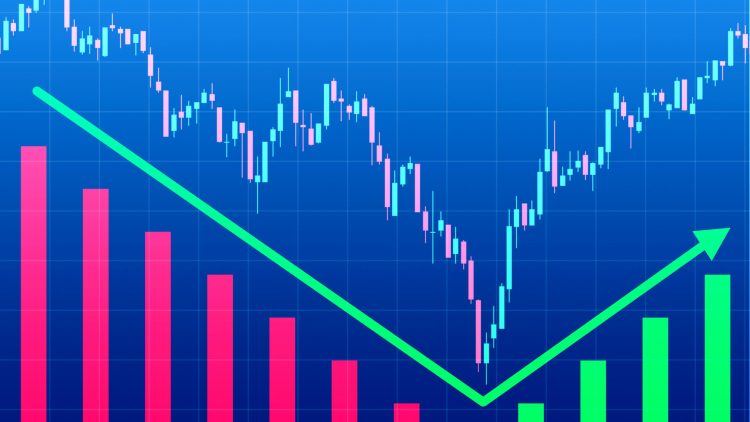The cryptocurrency market is notorious for its rapid cycles of hype and decline, where new tokens capture global attention only to lose steam weeks or months later. For investors, the challenge is distinguishing between tokens with lasting potential and those already entering decline. With billions of dollars rotating between narratives—NFTs, DeFi, GameFi, AI coins, and more—timing is everything.
This article explores the lifecycle of new crypto hype, analyzes the indicators of fading interest, and explains how to spot capital rotation into new sectors before the crowd does. By learning to read the signals, investors can avoid being trapped in fading projects and position themselves for the next wave of growth.
What Does the Lifecycle of New Crypto Hype Look Like?
Like many speculative markets, crypto tokens often follow a predictable lifecycle of attention and investment. Borrowing from the “Gartner Hype Cycle” model for technology, we can apply a similar framework to emerging tokens.
1. Innovation Trigger
- A new project launches, often with bold promises of disrupting industries.
- Examples: The first NFT platforms in 2020, or AI-related tokens in 2023.
- Token sales, whitepapers, and marketing campaigns create anticipation.
2. Peak of Inflated Expectations
- Early investors and influencers drive the token into exponential price growth.
- Headlines, celebrity endorsements, or viral Twitter campaigns push adoption.
- The fear of missing out (FOMO) brings in retail investors at inflated valuations.
3. Trough of Disillusionment
- Early hype fades as reality sets in.
- Issues like lack of utility, unsustainable tokenomics, or developer delays erode trust.
- Prices crash, sometimes by 70–90%, shaking out weak hands.
4. Slope of Realism
- Surviving projects build quietly, finding product-market fit and addressing flaws.
- A smaller, dedicated community stays, while speculators move on.
- Example: Ethereum after the ICO bubble burst in 2018—innovation in DeFi and NFTs quietly matured.
5. Plateau of Adoption
- Successful projects achieve real-world use cases, attracting stable liquidity and developers.
- They no longer rely solely on hype but on demonstrated utility.
- Example: Uniswap becoming a default DeFi exchange years after its initial launch.
For investors, the trick is identifying where a token sits in this cycle. Buying too late in the hype stage or holding too long in decline often leads to losses, while entering during the realism stage offers the best long-term upside.
What Indicators Reveal When Interest in a Token Is Fading?
Spotting fading projects requires tracking both on-chain data and off-chain sentiment signals.
1. Declining Trading Volume
- Sudden drops in daily or weekly volume often signal reduced speculative interest.
- Example: Many meme tokens surge briefly before liquidity evaporates, leaving thin markets.
2. Falling Developer Activity
- If GitHub commits, new updates, or protocol upgrades stall, it signals stagnation.
- Projects that fail to ship improvements quickly lose competitive edge.
3. Weakening Social Media Engagement
- Shrinking Twitter mentions, Discord activity, or Google search trends reflect waning enthusiasm.
- When influencers stop talking about a token, retail investors often follow.
4. Token Incentive Exhaustion
- Many projects launch with aggressive liquidity mining or staking rewards.
- Once subsidies end, TVL (Total Value Locked) often collapses if usage wasn’t organic.
5. Price Action Divergence
- If the broader sector (e.g., gaming tokens) is performing well but one project lags consistently, it may indicate fading confidence.
- A token that fails to recover during bullish sector moves is often in decline.
By combining these signals, investors can detect when momentum shifts from growth to decay—and adjust exposure accordingly.

How Can Investors Identify Rotation into New Sectors?
Crypto markets don’t just fade; they also rotate capital into new narratives. Identifying these rotations early is one of the most profitable strategies in digital assets.
1. Narrative Shifts on Social Platforms
- Twitter, Reddit, and Telegram are ground zero for emerging narratives.
- Example: In late 2020, discussions shifted from DeFi protocols to NFTs, marking a capital rotation.
2. Surge in New Listings
- A wave of exchange listings in a sector (e.g., multiple AI tokens at once) often precedes capital inflows.
- Exchanges follow trends to meet demand, signaling growing interest.
3. Venture Capital Flows
- Tracking where crypto VCs allocate funding can reveal emerging narratives months in advance.
- Example: Heavy VC investment in Layer-2 scaling projects in 2021 foreshadowed their rise in 2022–2023.
4. Correlated Price Movement
- When multiple tokens in the same category rise together, it signals sector-wide momentum.
- Example: In 2021, gaming tokens like Axie Infinity (AXS), The Sandbox (SAND), and Gala Games (GALA) surged simultaneously.
5. Infrastructure Development
- Ecosystem grants, hackathons, and developer onboarding programs often drive new sector growth.
- Ethereum’s early grants for DeFi builders laid the foundation for an entire industry.
Rotation is less about abandoning old sectors entirely and more about reallocating attention and liquidity to where the next wave of excitement lies.
What Practical Strategies Can Help Navigate Market Cycles?
- Track Hype Metrics and Fundamentals in Tandem
- Volume, active wallets, and TVL show usage, while social chatter reveals sentiment.
- Buy During Realism, Not Peak Hype
- The best entry points often come after initial crashes, when fundamentals begin proving themselves.
- Diversify Across Narratives
- Don’t go all-in on one trend; spread risk across DeFi, gaming, infrastructure, and new categories.
- Use Rotational Awareness
- When one sector overheats, begin researching where capital is rotating next.
- Set Exit Plans Early
- Predetermine take-profit levels before emotions take over. Selling into hype is often more profitable than waiting for “the top.”
Conclusion: Can Investors Truly Time Hot vs. Fading Tokens?
While no one can time the market perfectly, understanding the lifecycle of crypto hype, watching for signs of fading momentum, and recognizing sector rotations dramatically increases the odds of success. Emerging tokens can deliver massive upside, but only if investors avoid being the last to exit fading trends.
The real winners are projects that survive beyond hype cycles, evolving into sustainable ecosystems. Investors who focus on utility while also respecting market psychology can spot opportunities where others only see noise.
In crypto, the lesson is clear: hot tokens can make fortunes, fading tokens can erase them, and timing is the ultimate edge.

























